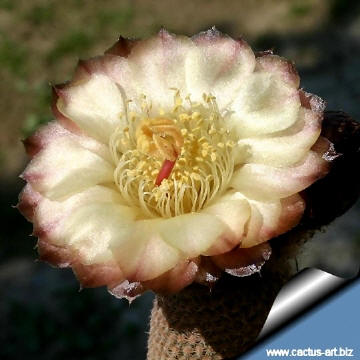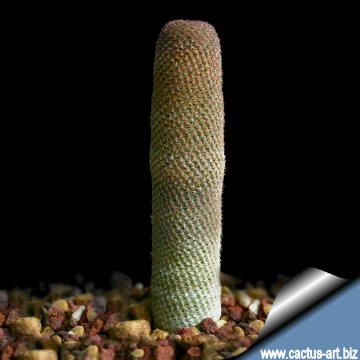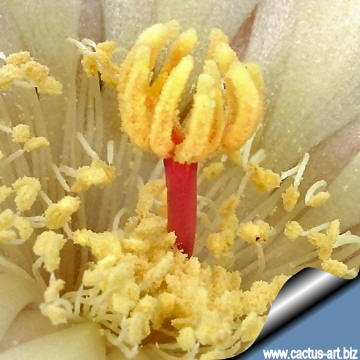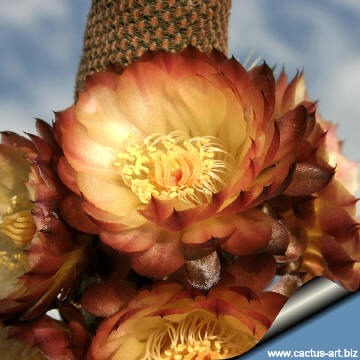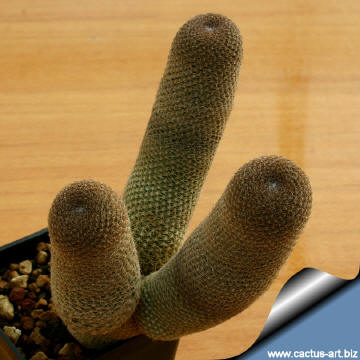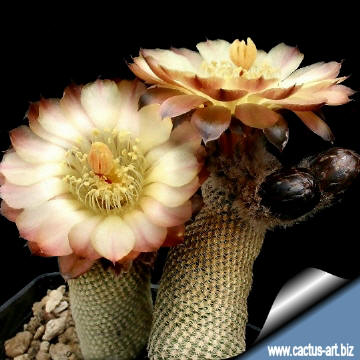-
x
Descrizione
Specie con corpo cilindrico descritta recentemete. E' una pianta bellissima i cui fiori hanno la lucentezza della seta. Family: Cactaceae (Cactus Family) Scientific Name: Lobivia famatimensis Distribution: Argentina, Prov. of Catamarca: Tinogasta, in the mountains around the Fiambalá valley, in the Sierra de Fiambalá and in the Sierra de Narváez. Habitat: Grows along with a very sparse vegetation of Puna bonnieae, Echinopsis leucantha, Pterocactus tuberosus, Tephrocactus geometricus, Cumulopuntia sp., Maihueniopsis sp. and Opuntia sulphurea on gravel slopes, in a very drained and arid soil (composed of clay, sand and stones) at 1700 - 2.400 m ASL. Conservation status: Listed in CITES Appendix II
| |
| Habit: Small solitary or branched, columnar geophytic cactus. | |
| Notes: Related to L. famatimensis, clearly distinguished from it by the narrow neck that separates the large tuberous roots from the stem an for the tall cylindrical stem. | |
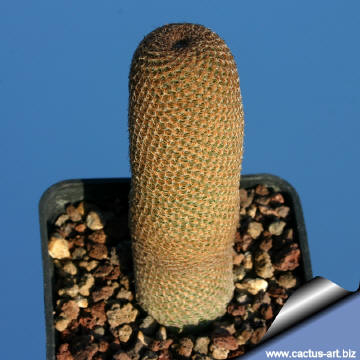 | |
Cultivation: Very slow growing. The Lobivia famatimensis have a thick taproot and are susceptible to over-watering. Sometimes they are grafted to avoid root rot problems. Suited for sunny-bright exposure; they can tolerate light shade. They like warmth (recommended minimum winter temperature 5° C). But plant kept perfectly dry can easily survive in winter night temperatures below 0° C (In our greenhouse there was no damage at -10° C for a few hours in the winter of 2002-2003 ) They prefer airy exposures. Water regularly in summer, but do not overwater, it prefer a completely dry place during winter. Suited for sunny-brightly exposure; can tolerate light shade. Propagation: Seeds or graft. Seedlings of the var. bonnieae grow faster than other Lobivia famatimensis. Seeds can be sown in the spring or summer. The seedlings should not be disturbed until they are well rooted, after which they can be planted separately in small pots. | |

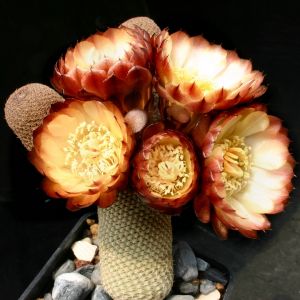
 Newly described with thin cylindrical body.
Newly described with thin cylindrical body.
